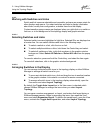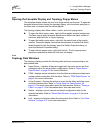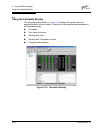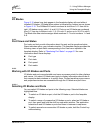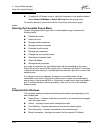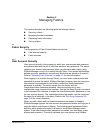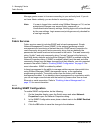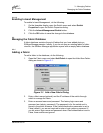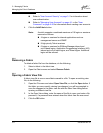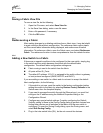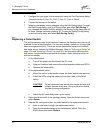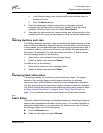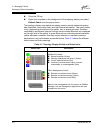
3 – Managing Fabrics
Fabric Security
3-2 59048-04 Rev. B
D
Manager grants access to its menus according to your authority level. If you do
not have Admin authority, you are limited to monitoring tasks.
3.1.2
Fabric Services
Fabric services security includes SNMP and in-band management. Simple
Network Management Protocol (SNMP) is the protocol governing network
management and monitoring of network devices. SNMP security consists of a
read community string and a write community string, that are basically the
passwords that control read and write access to the switch. The read community
string ("public") and write community string ("private") are set at the factory to
these well-known defaults and should be changed if SNMP is enabled using the
Network Properties dialog. If SNMP is enabled (default) and the read and write
community strings have not been changed from their defaults, you risk unwanted
access to the switch. Refer to ”Enabling SNMP Configuration” on page 3-2 for
more information. SNMP is enabled by default.
In-band management is the ability to manage switches across inter-switch links
using SANbox Manager, SNMP, management server, or the application
programming interface. The switch comes from the factory with in-band
management enabled. If you disable in-band management on a particular switch,
you can no longer communicate with that switch by means other than a direct
Ethernet or serial connection. Refer to ”Enabling In-band Management” on
page 3-3 for more information.
3.1.2.1
Enabling SNMP Configuration
To enable SNMP configuration, do the following:
1. On the faceplate display, open the Switch menu and select Network
Properties to open the Network Properties dialog.
2. In the SNMP Configuration area, place a check mark in the SNMP Enabled
check box.
3. Click the OK button to save the change to the database.
Note: If a user is logged into a switch using SANbox Manager or CLI, and an
administrator changes user access rights, passwords, or
UserAuthentication security settings, existing logins will not be affected
by the new settings. Login access and privileges are only checked for
a new login request.



